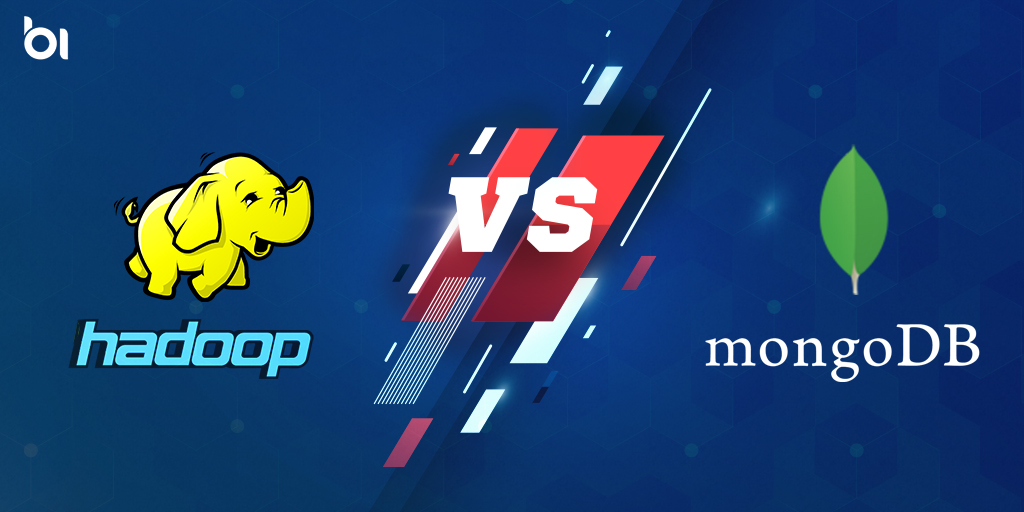Organizations can do well to interlink data that are comparative – to have the option to strategize better and comprehend their clients in a superior manner – a thing we generally allude to as Big Data.
Table of Contents
ToggleWhat are we discussing, what is BIG Data, Hadoop VS MongoDB?
Associations store data under various heads. Some identify with client details, some identify with client mail ID, and some identify with client needs.
All of the information is significant, however, it is futile until it is sorted out, prepared and diminished to less complex structures so to bode well out of it.
This information can be as content, pictures, sound, and recordings – anything possible. Its greater part would not bode well independently.
Nonetheless, set up together with a particular goal in mind, they offer valuable bits of insights that can offer detailed knowledge about the observed aspect. Join your client’s birth date with his own taste and you may very well see how you can help him more with your products or services.
The term BIG DATA alludes to a large set of data that are massively huge to be handled by the customary techniques for arranging and along these lines requires a more brilliant framework to break down, gather, offer, store and disentangle.
A framework needs to process this information. It is this need raised the improvement of Relational Database Management frameworks and Hadoop and MongoDB – two major names in the Big Data market.
Let’s dig down the difference between Hadoop VS MongoDB…
What is Hadoop?
Hadoop was an open-source project from the beginning as it were. It was initially originated from a project called Nutch, an open-source web crawler made in 2002.
After that in 2003, Google released a white paper on its Distributed File System (DFS) and Nutch alluded the same and built up its NDFS. After that in 2004, Google presented the idea of MapReduce which was received by Nutch in 2005.
Hadoop development was formally begun in 2006. Hadoop turned into a platform for processing the mass amounts of data in parallel across over groups of commodity hardware. It has turned out to be synonymous with Big Data, as it is the most prominent Big Data tool.
(Hadoop VS MongoDB)
Hadoop Features
The features of Hadoop are described below:
- Distributed File System: As the data is stored in a distributed manner, this allows the data to be stored, accessed and shared parallelly across a cluster of nodes.
- Open Source: Apache Hadoop is an open-source project and its code can be modified according to the user’s requirements.
- Fault Tolerance: In this framework, failures of nodes or tasks can be recovered automatically.
- Highly Available Data: In Apache Hadoop, data is highly available due to the replicas of data of each block.
Limitation of Hadoop
As good as Hadoop is, it, all things considered, has its own specific set of limitations. Among these disadvantages:
- Because of its programming, MapReduce is suitable for simple solicitations. You can work with autonomous units, however not as viable with intuitive and iterative tasks. Not at all like independent units that need basic shuffle and sort, iterative errands require various maps and lessen processes to finish. Accordingly, different documents are made between the guide and decrease stages, making it wasteful at advanced analytics.
- Just a couple of passage level software engineers have the java abilities important to work with MapReduce. This has seen suppliers racing to put SQL over Hadoop in light of the fact that developers gifted in SQL are simpler to discover.
- Hadoop is a mind-boggling application and requires an unpredictable degree of information to empower capacities, for example, security conventions. Likewise, Hadoop lacks storage and network encryption.
- Hadoop doesn’t give a full suite of tools important for handling metadata or for managing, cleansing, and guaranteeing data quality.
- Its complex design makes it unsuitable for taking care of the little amounts of data since it doesn’t be able to support random reading of small files efficiently.
- Because of the way that the Hadoop framework is composed absolutely in Java, a programming language progressively undermined by cyber-criminals, the platform presents eminent security dangers.
Contact us if you need any kind of Hadoop Consulting and Development Services
(Hadoop VS MongoDB)
For what reason would it be advisable for us to use Hadoop?
Okay, so since we recognize above what Hadoop is, the following thing that should be explored is WHY Hadoop. Here for your thought are six reasons why Hadoop just might be the best fit for your organization and its need to gain by big data.
- You can rapidly store and process a lot of varied data. There’s a consistently expanding volume of data created from the internet of things and online networking. This makes Hadoop’s capacities a distinct advantage for managing these high volume data sources.
- The Distributed File System gives Hadoop high processing force important for quick data calculation.
- Hadoop secures against equipment disappointment by diverting occupations to different hubs and naturally putting away various duplicates of data.
- You can store a wide assortment of organized or unstructured data (counting pictures and recordings) without having to preprocess it.
- The open-source framework keeps running on commodity servers which are more financially savvy than dedicated storage.
- Adding hubs empowers a framework to scale to deal with expanding data indexes. This is finished with little administration.
What is MongoDB?
According to Educba, MongoDB is mainly built for data storage and retrieval. MongoDB can also perform data processing and scalability. It is based on C++ and belongs to the NoSQL family and does not rely on creating relational tables instead; it stores its records as documents.
Many companies use Hadoop and MongoDB platform to create their own Big Data application:
MongoDB uses its platform for real-time operational process helping end-users and Business processes.
Hadoop, on the other hand, gets the data from MongoDB; blend the data from different sources to produce machine learning models, which MongoDB will use it for Real-Time Operational processes.
(Hadoop VS MongoDB)
MongoDB Features
According to Analytics India, The features of MongoDB are mentioned below:
- Sharing Data Is Flexible: MongoDB stores data in flexible, JSON-like documents which means that the fields can vary from document to document and data structure can be changed over time.
- Maps to The Objects: The document model maps to the objects in the application code, making data easy to work with.
- Distributed Database: MongoDB is a distributed database at its core, so high availability, horizontal scaling, and geographic distribution are built-in and easy to use.
- Open-sourced: MongoDB is free to use.
Limitations of MongoDB
While MongoDB incorporates incredible highlights to manage a significant number of the difficulties in big data, it accompanies a few restrictions, for example,
- To utilize goes along with, you need to physically include code, which may cause more slow execution and not exactly ideal execution.
- The absence of joins likewise implies that MongoDB requires a great deal of memory as all records must be mapped from circle to memory.
- Archive sizes can’t be greater than 16MB.
- The settling usefulness is constrained and can’t surpass 100 levels.
For what reason would it be advisable for us to utilize MongoDB?
Organizations today require fast and adaptable access to their data so as to get important bits of knowledge and settle on better choices. MongoDB’s highlights are more qualified to help in gathering these new data challenges. MongoDB’s case for being utilized comes down to the accompanying reasons:
- When utilizing relational databases, you need a few tables for a construct. With Mongo’s document-oriented based model, you can represent a construct in a single entity, particularly for immutable data.
- The inquiry language utilized by MongoDB underpins dynamic questioning.
- The schema in MongoDB is understood, which means you don’t need to enforce it. This makes it simpler to represent inheritance in the database notwithstanding improving polymorphism data storage.
- Horizontal storage makes it simple to scale.
(Hadoop VS MongoDB)
What would it be a good idea for us to use for Big Data? (Hadoop VS MongoDB)?
In attempting to address this inquiry, you could take a look and see which big organizations use which platform and attempt to pursue their model. For example, eBay, SAP, Adobe, LinkedIn, McAfee, MetLife, and Foursquare use MongoDB. Then again, Microsoft, Cloudera, IBM, Intel, Teradata, Amazon, Map R Technologies are considered as a real part of outstanding Hadoop clients.
Eventually, both Hadoop and MongoDB are mainstream decisions for dealing with big data. Be that as it may, they have numerous likenesses (e.g., open-source, NoSQL, schema-free and Map-reduce), their way to deal with information processing and storage is unique. It is definitely the distinction that, at last, causes us to decide the best decision between Hadoop VS MongoDB.
We, at Binary Informatics, offer the top tier Big Data Services to meet your business prerequisites. Our scope of development and consulting services range Hadoop and MongoDB to address data complexities and improve operational effectiveness. In the event that you need to find out about our vigorous enterprise data solution or adaptable commitment models to hire Hadoop or MongoDB developers, Contact us at
Email: – info@binaryinformatics.com
Skype: – @binaryins




